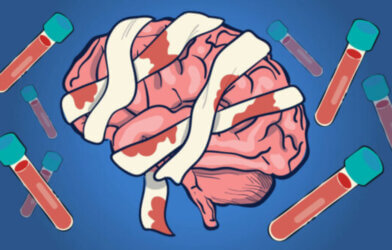In the ongoing quest to find new treatments for devastating neurological disorders like Alzheimer’s disease, Parkinson’s disease, and traumatic brain injury, scientists are leaving no stone unturned. One promising avenue of research involves studying compounds derived from an ancient medicinal plant — cannabis. In particular, scientists are looking at the benefits of cannabinol (CBN), a lesser-known chemical cousin of the famous cannabinoids THC and CBD.
CBN has recently emerged as a potential neuroprotective agent. Previous studies found that CBN could shield brain cells from damage and death in cellular models of aging and disease. Researchers were intrigued when CBN appeared to provide these benefits by protecting mitochondria, the tiny powerhouses found in every cell.
Now, in a new study published in the journal Redox Biology, Salk University scientists have taken their research a step further. Using a methodical screening approach, they sought to determine the key structural elements of CBN responsible for its protective effects and to engineer optimized versions of the molecule.
“Not only does CBN have neuroprotective properties, but its derivatives have the potential to become novel therapeutics for various neurological disorders,” senior study author Dr. Pamela Maher, research professor at the Salk Institute, in a media release. “We were able to pinpoint the active groups in CBN that are doing that neuroprotection, then improve them to create derivative compounds that have greater neuroprotective ability and drug-like efficacy.”
Researchers started by creating a library of molecular fragments representing different pieces of the CBN molecule. These included fragments mimicking the monoterpenoid “head,” phenolic “body,” and aliphatic “tail” of CBN. By systematically testing these fragments in stressed-out mouse nerve cells, they determined that the phenolic “body” was the crucial unit required for CBN’s activity, while the “tail” could be used to fine-tune the molecule’s protective potency and drug-like properties.
Armed with this knowledge, researchers designed and synthesized four new simplified analogs of CBN, dubbed CP1 through CP4. In a battery of cell culture experiments, these analogs proved to be just as neuroprotective as CBN, shielding mouse nerve cells from several different toxic insults. Researchers were excited when the analogs also showed enhanced antioxidant effects compared to CBN, more potently reducing levels of harmful oxidative stress and damage to lipids in cell membranes.
“We were looking for CBN analogs that could get into the brain more efficiently, act more quickly, and produce a stronger neuroprotective effect than CBN itself,” explains first study author Zhibin Liang, postdoctoral researcher at Salk Institute. “The four CBN analogs we landed on had improved medicinal chemical properties, which was exciting and really important to our goal of using them as therapeutics.”
But researchers didn’t stop there. To assess whether their newly minted CBN analogs could show beneficial effects in a living organism, they turned to the humble fruit fly. Drosophila melanogaster may seem like an unlikely hero in the fight against neurological disorders, but these tiny insects are fantastic models for studying the molecular basis of human diseases and for rapidly screening potential drug candidates.
Scientists used a fruit fly model of mild traumatic brain injury (mTBI), a risk factor for later developing Alzheimer’s disease. Remarkably, treating the brain-injured flies with CBN or the CP analogs increased their lifespan and reduced mortality rates. Analog CP1 proved to be the star of the show, outperforming even CBN itself in the fly mTBI model.
So what makes CP1 and its sister compounds so special? Researchers believe it comes down to precise chemical modifications that enhance the analogs’ pharmacological properties. CP1, for instance, has two branched dimethyl groups that may act as anchors, allowing it to efficiently insert into cell membranes and engage its molecular targets.
“Our findings help demonstrate the therapeutic potential of CBN, as well as the scientific opportunity we have to replicate and refine its drug-like properties,” notes Dr. Maher. “Could we one day give this CBN analog to football players the day before a big game, or to car accident survivors as they arrive in the hospital? We’re excited to see how effective these compounds might be in protecting the brain from further damage.”
While much more research is needed, including testing in mammalian models, this study provides an exciting proof-of-concept for the development of novel neuroprotective drugs based on the molecular scaffold of CBN. By combining a clever fragment-based drug discovery approach, cell culture models of neurological stress, and a rapid in vivo fly model, Salk researchers have laid a solid foundation for future development of CBN analogs as potential therapeutics for Alzheimer’s, Parkinson’s, traumatic brain injury, and beyond.












